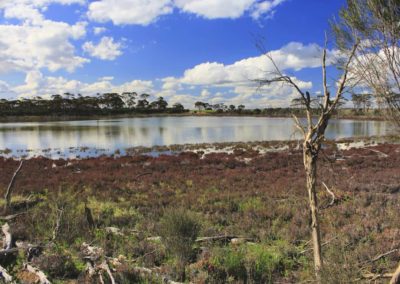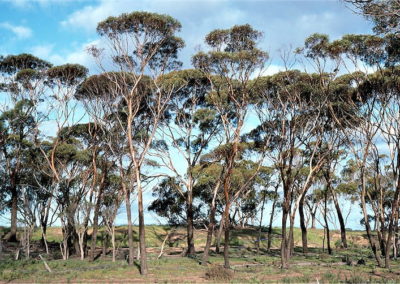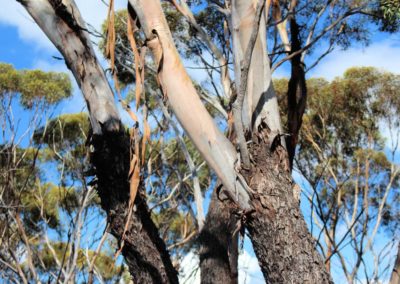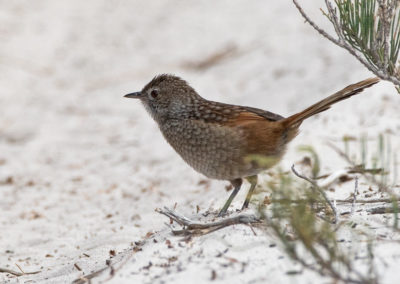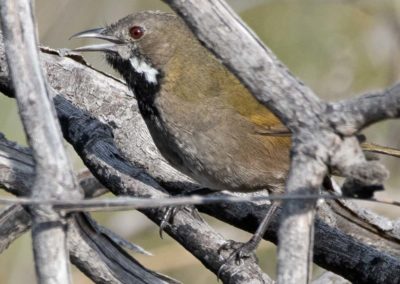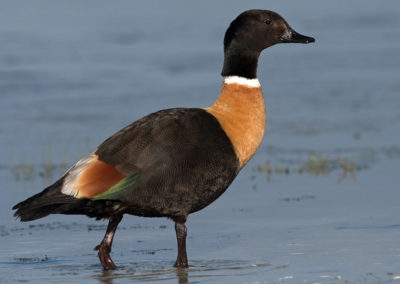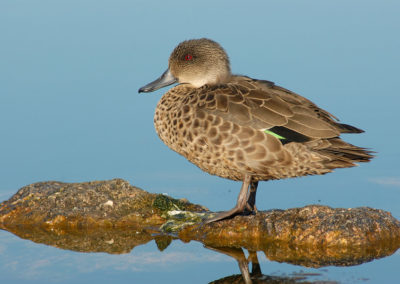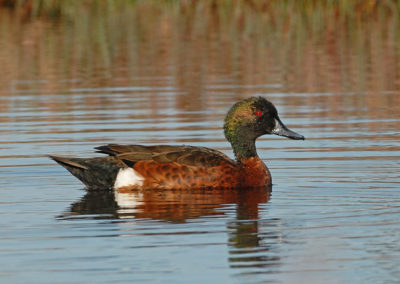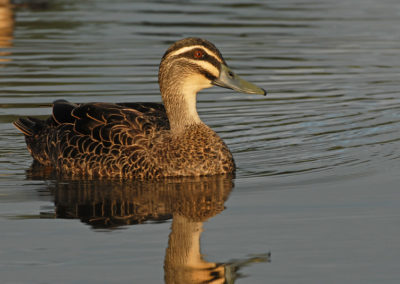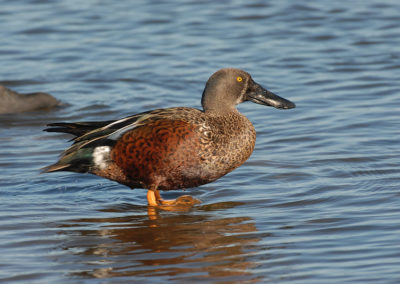-
Mobile Reception (Telstra)
Overview
The Chinocup Lake system was once one of the headwaters of an ancient Amazon scale river system that once flowed through the Wheatbelt. 250 million years of gradual erosion has filled those riverbeds and deposits from salt tinged sea breezes over that same immense time span has turned a once mighty river into an immense salt lake system that is rarely, if ever, connected by flowing water.
Despite the hyper-saline water, these lakes are complex ecosystems and can carry lots of life, from minute invertebrates through to bursts of waterbirds and waders when wet.
Around the lakes are stands of halyophytes – plants that are specially adapted to the extremely salty conditions (e.g. samphires and saltbush) and then Melaleuca shrubs around the edge of the lakes and the stately Kondinin Blackbutt, which is partly salt tolerant but generally grows on sandhills surrounding salt lakes.
There is a whole chain of lakes that run between Lake Grace in the north to Pingrup in the south, with many of them varying shades of pink at some times of the year, caused by a salt-loving algae and a salt-loving halobacteria – both of which produce a red pigment.
Rasmussen Road traverses the Lake Chinocup system, with a stop possible next to Lake Altham. There are no facilities at these lakes – just the opportunity to experience a remarkable salt lake landscape up close.
Story of the place
Noongar Boodja
At least 11 cultural heritage sites have been recorded by the WA Museum in the Chinocup Nature Reserve. All are artefact scatters, the remains of a constant habitation of this country by the First Nations people over many millennia.
Remains of an ancient river
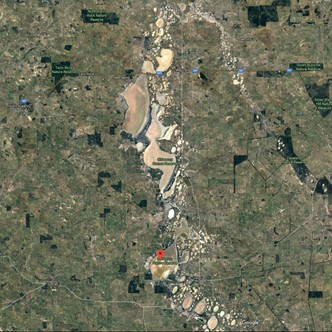
Image: Google Earth
The scale of the enormous, ancient river systems that once flowed over this country is obvious in satellite images.
This was once part of a river of the size of the Amazon which has gradually filled with sediment over the last 250 million years, becoming what is known as a paleo-channel. Over that time continual depositing of salt from the sea breezes has left immense deposits of salt in the surrounding land, meaning that the lakes formed along the old river channel are invariably salty.
The Chinocup Nature Reserve includes one of these salt lake chains , surrounded by the original vegetation that was there before pre-European settlement, which is vitally important in this highly cleared landscape.
The reserve contains several rare and endangered plants and rare fauna has also been spotted in the past. The vegetation growing on the gypsum dunes on the south and south-east shore of Lake Chinocup has been recorded as a possible threatened ecological community, but more information is needed before it can be officially listed.
Pink Lakes
Many of these lakes will be different shades of pink at different times of the year. This colour arises from both an algae, and a single-celled Halobacteria, both of which can thrive in the shallow saline systems.
The algae Dunaliella salina is the most salt tolerant of algal species, able to grow in extremely hyper-saline conditions. When conditions become extremely harsh – with increased salinity, temperature and light – the algae accumulates the reddish pigment beta-carotene, which protects the algae from too much light by coating the green chlorophyll. The normally green Dunaliella salina becomes red, making the water around it look pink.
The single-celled organism Halobacterium cutirubrum is also present in hyper-saline salt lakes, growing within the salt crust on the bottom of the lake. It too is pink in colour, enhancing the pink hues of the salt lakes.

Image: Graham Zemunik
The exact colour of the lake will depend on the balance between Dunaliella salina and Halobacterium cutirubrum. Because there is a direct influence from salt concentration and temperature, when water levels are low and temperatures high in late summer the lakes will likely be most pink.
Plant Life
Lake Chinocup and the other lakes in this chain is surrounded by a wide expanse of fringing vegetation. These lakes are generally saline, reaching hypersaline conditions when they dry out over summer. Any plant that grows here needs to be specially adapted to these harsh conditions.
Closest to the lakes is a mixture of pigface, samphire and salt bush, obviously all plants that are adapted to the extreme saline conditions.
Further away from the lakes are stands of the stately Kondinin Blackbutt Eucalyptus kondininensis.
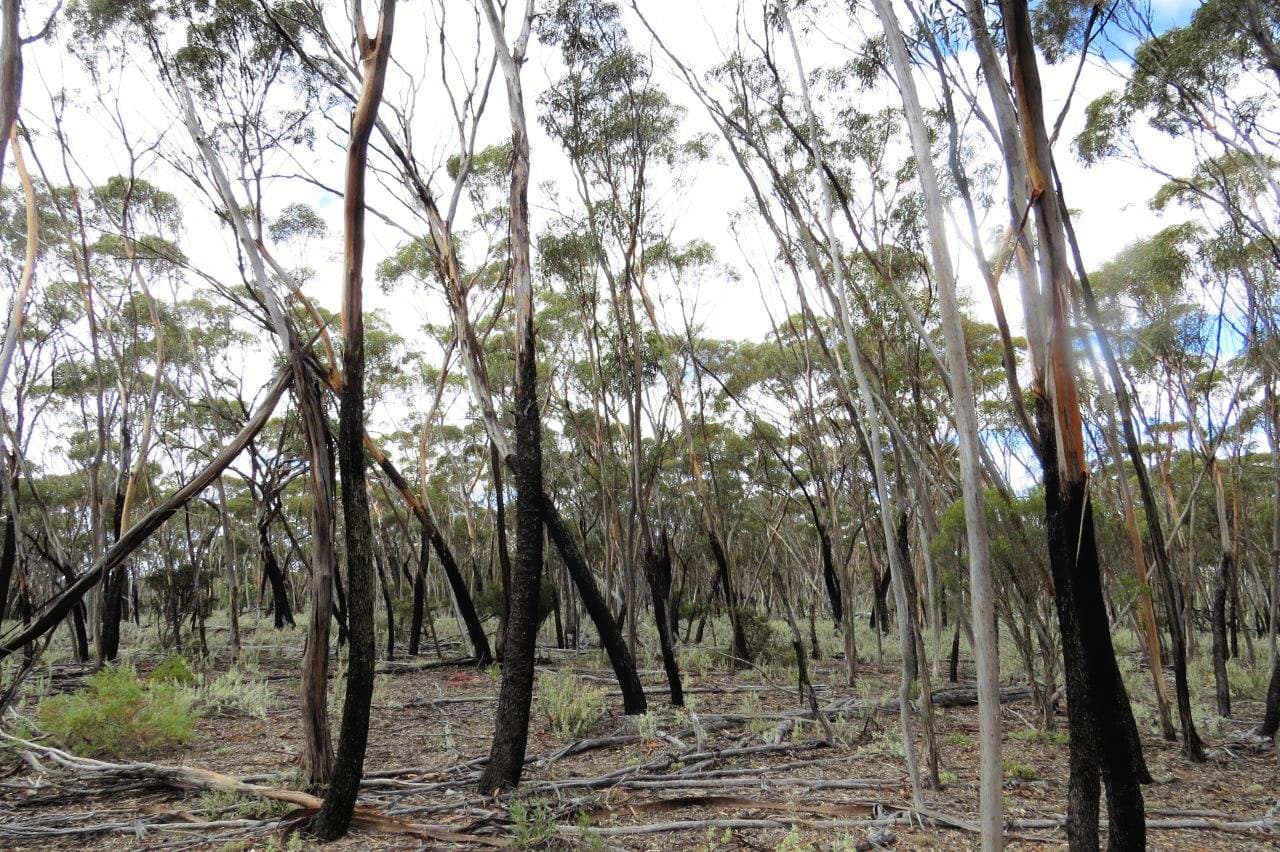
Eucalyptus kondininensis woodland
Image: Anne Rick
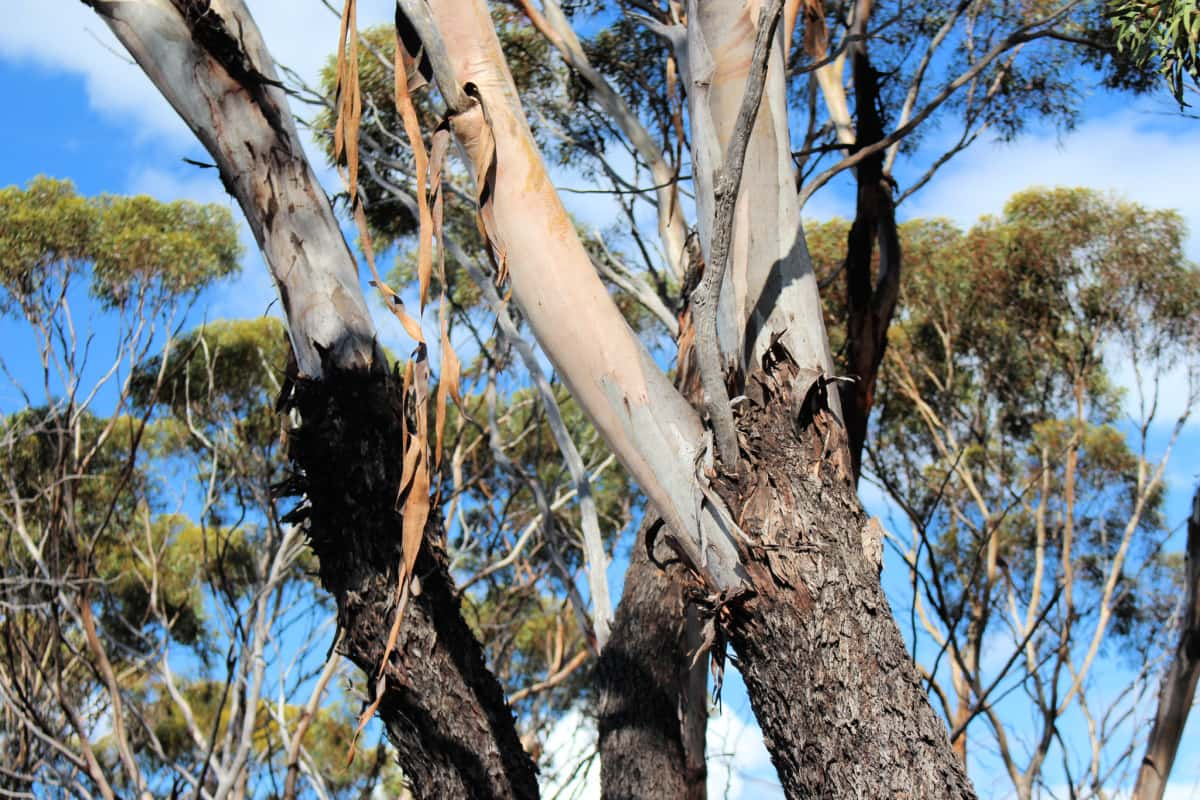
Eucalyptus kondinensis
Image: Nicole Hodgson
There is Melaleuca or tea tree scrub and a small area of Sheoak (Casuarina obesa). Further from the lakes and usually on higher dune areas is found mallee scrub woodlands. The overstorey of the woodlands is Eucalyptus incrassata (one of the most widespread mallee species) and Eucalyptus phaenophylla (common southern mallee).
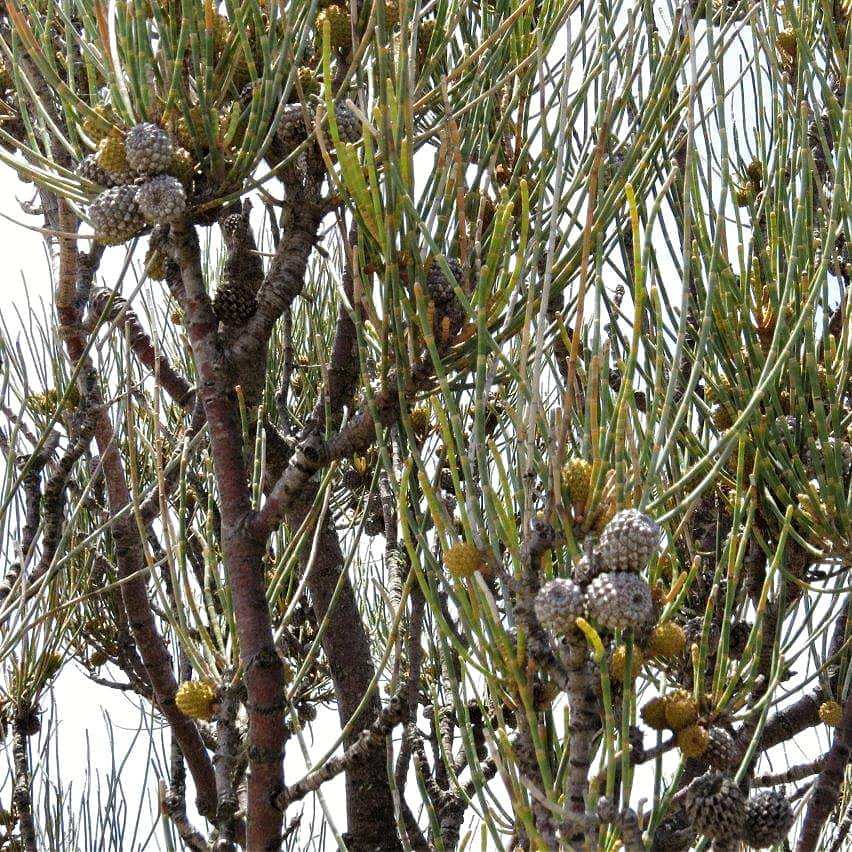
Casuarina obesa
Image: Anne Rick
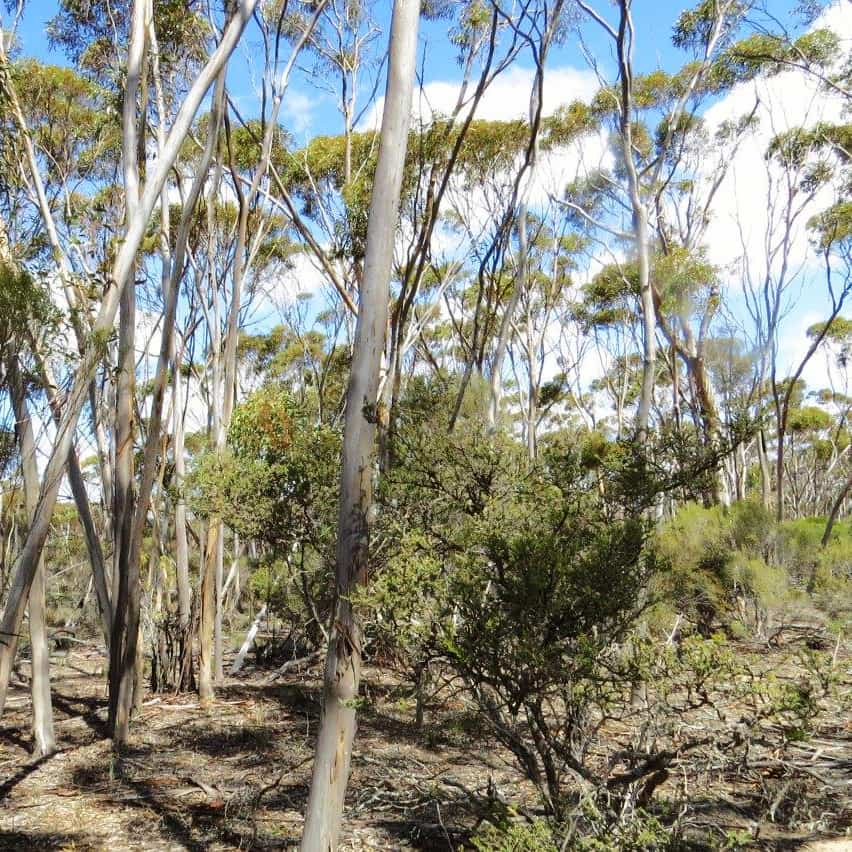
Eucalyptus urna woodland
Image: Anne Rick
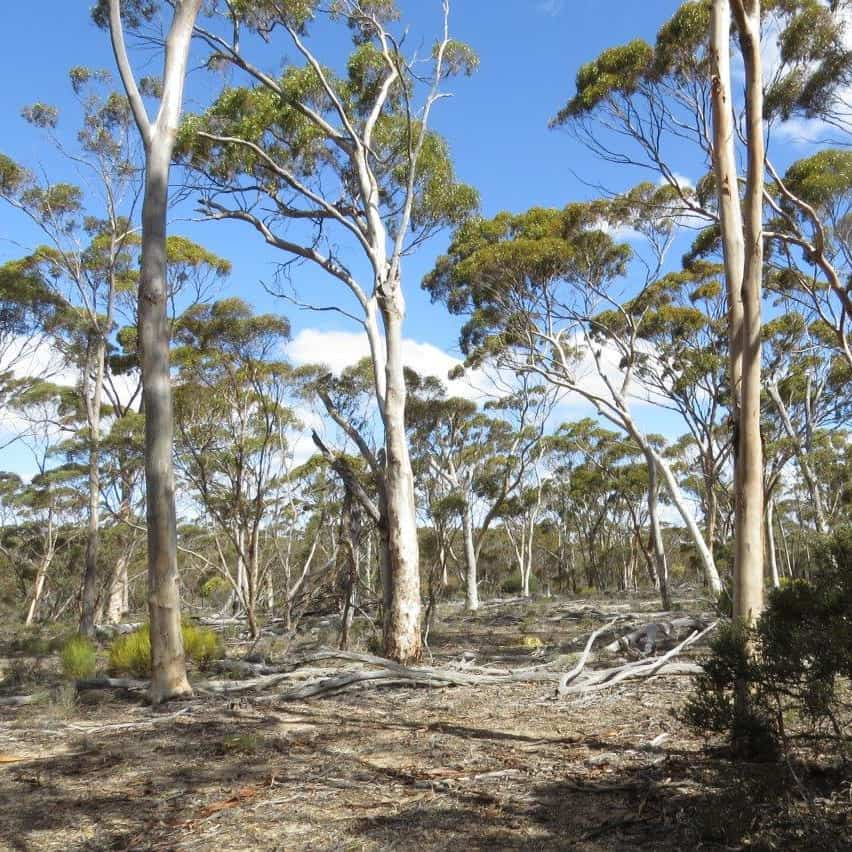
Eucalyptus salmonophloia woodland
Image: Anne Rick
Some of the more unusual or rare species to be found in Lake Chinocup include:

Lonely Hammer Orchid (Drakaea isolata)
Image: Mark Brundrett
This rare orchid is found in the south-eastern section of the reserve.
Only known from a single location near Lake Chinocup, despite extensive searches of nearby salt lakes.
It is thought to be particularly rare due to the specificity of the habitat and the rarity of the pollinator.
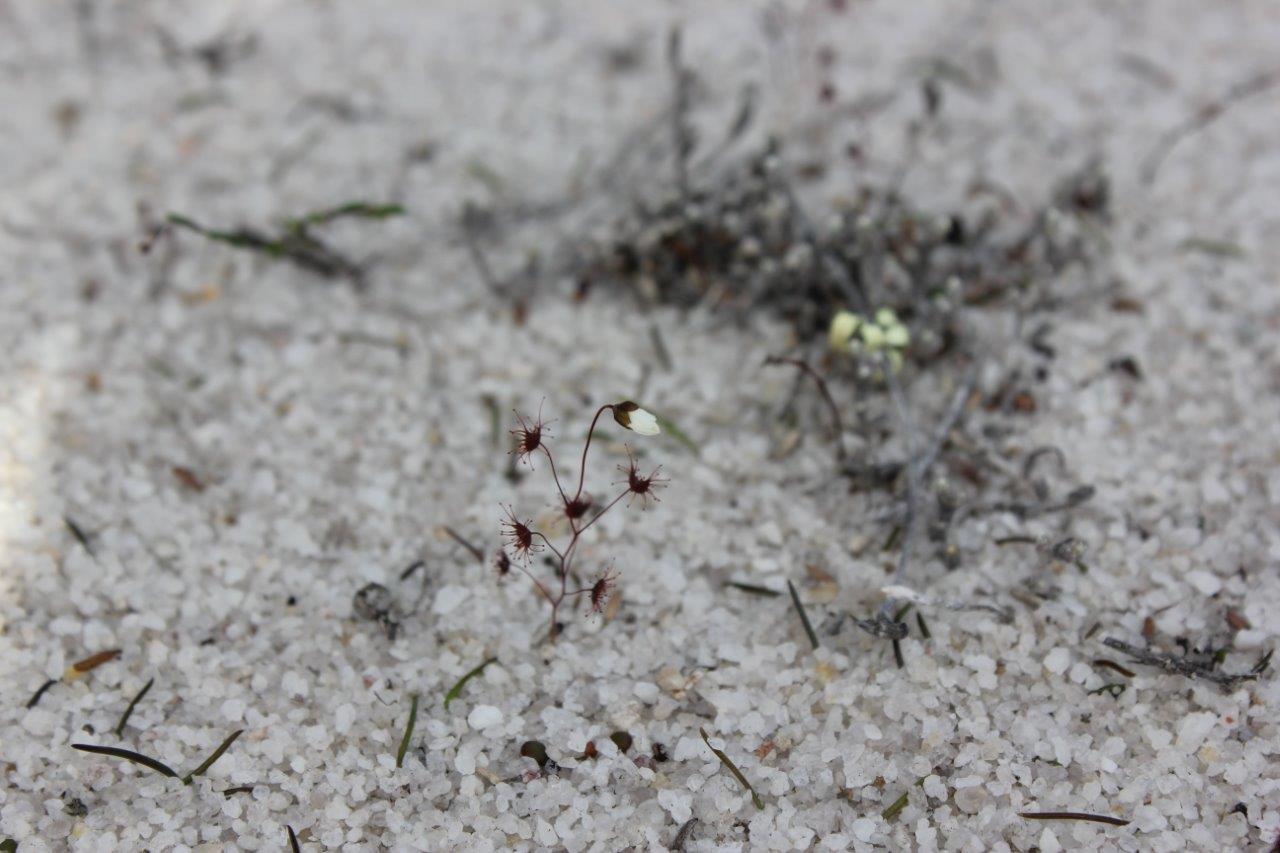
Saltlake Sundew (Drosera salina)
Image: Anne Rick
This small example of drosera – the beautiful and carnivorous family of plants is a species that is specially adapted to highly saline conditions at the edge of salt lakes.
It is only known from a handful of locations, including the Chinocup Lake System, as it requires a particular habitat next to salt lakes which have a thin layer of quartz sand overlaying a heavier clay/ sand soil.
Read more and see some beautiful photos from the Fierce Flora blog.
Settler History
In the 1880s shepherds from pastoral stations further south began to graze their sheep in this area. They were followed by the sandalwood cutters.
This area was a source of mallet bark as well, which was stripped from trees, and used for leather tanning. In 1909 / 1910 prices for mallet bark rose dramatically and there was a local boom. Most patches were cut and the bark stripped and carted to Katanning and Dumbleyung.
During this time, some of the land in the area was leased to graziers, but it wasn’t until the 1910s that farming began in earnest in the area, through the Conditional Purchase scheme in which farmers could get to own their land by clearing and farming it.
This photograph shows a ‘Corduroy’ – a crossing over a wetland area made of logs and sand. They could be hazardous for horses as the logs could roll and shift.
Written on back of this photgraph:
A pretty little view of the “corduroy” across Lake Chinokup between Nyabing & the Clegg’s at Lake Pingrup. Can you see how sandy the road is down to the corduroy? It was like that for a good long way. It is Ginger’s head.
See & Do
Walk trails
There are no dedicated walk trails through the Chinocup Nature Reserve, but the woodland is quite open and accessible, and so short walks around the edges of the salt lakes are possible.
Just be careful where you put your feet, with a number of rare plants found near the salt lakes.
Birdlife
Some rare birds have been recorded in the Chinocup Nature Reserve:
When the lakes fill with water, they can carry bursts of waders and waterbirds. Larger lakes are used by waterbirds for breeding, while smaller lakes, especially if they are fresher, are used for feeding and drinking. Species you are likely to see include:
Practical Information
Directions
The most accessible place to experience the Chinocup Lake System is on Rasmussen Road. From Pingrup drive north on the Pingrup-Lake Grace Rd for 14.5km then turn left onto Rasmussen Rd.
Closest towns
Pingrup – 37km via Newdegate-Pingrup Rd
Newdegate – 47km via Newdegate-Pingrup Rd
Where to eat and stay
See the suggestions from our friends at Great Southern Treasures:
Visitor Information
Shire of Kent
Richmond Street, Nyabing
(08) 9829 1051
admin@kent.wa.gov.au
Website
Pingrup Community Resource Centre
Lot 2, Burston St, Pingrup
(08) 9820 1101
pingrupcrc@gmail.com
Website

